|
IJN A6M5 Zero Model 52 Ko
Mitsubishi Production
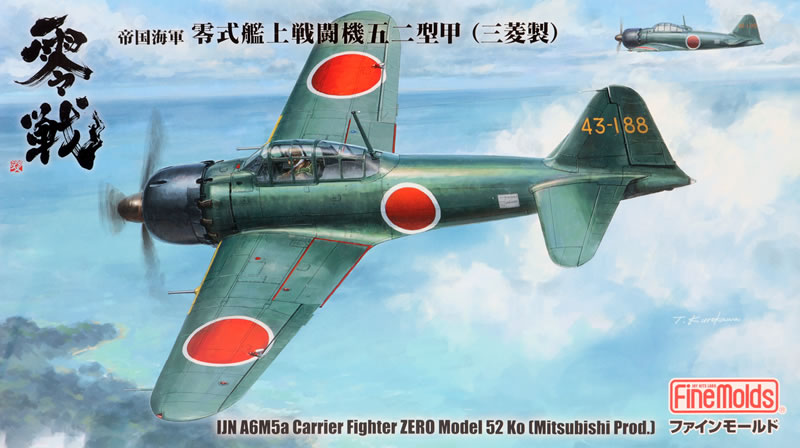
Fine Molds, 1/48 scale
S
u m m a r y |
| Description and Catalogue Number: |
Fine Molds Kit No. FZ03 - IJN A6M5 Zero Model 52 Ko (Mitsubishi Production) |
| Scale: |
1/48 |
| Contents and Media: |
118 parts in grey plastic; 19 parts in clear plastic; two grey polythene caps; markings for two aircraft. |
| Price: |
USD$53.66 Fine Molds FZ01&FZ02 Re-release Pre-Order with Free Shipping |
| Review Type: |
FirstLook |
| Advantages: |
Innovative parts breakdown; high level of detail; subtle and convincing surface textures; accurate useful options including drop tank, poseable ailerons, flaps and rudder; high quality decals. |
| Disadvantages: |
None noted. |
| Conclusion: |
Fine Molds’ new 1/48 scale A6M5 Zero is an impressive rendition of this classic fighter.
The combination of fine surface textures, innovative design, and overall accuracy should make it a pleasure to build..
Highly Recommended. |
Reviewed by Brett Green

By mid-1943, the Mitsubishi A6M5 Zero marked the last major development of Japan’s most famous fighter.
The early A6M2 had stunned opponents in 1940 with its agility and range but by 1943 new Allied types such as the F6F Hellcat, F4U Corsair, and P-38 Lightning had eclipsed it in speed, firepower, and protection.
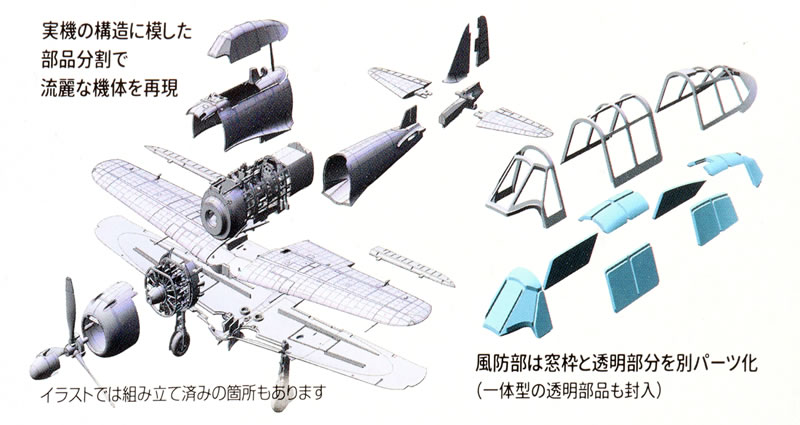
The A6M5 (Navy Type 0 Carrier Fighter Model 52) was Mitsubishi’s response. The wing was shortened and fitted with fixed, non-folding tips to improve roll rate and dive performance. Power came from the Nakajima Sakae 21 engine with individual exhaust stacks providing a small thrust boost. Wing skins were thickened, and minor armour and self-sealing fuel tanks were introduced on later sub-types.
Armament remained two 20 mm Type 99 Model 2 cannon and two 7.7 mm machine guns. Although still exceptionally manoeuvrable, the A6M5’s lightweight construction and modest engine output left it vulnerable to heavier Allied fighters. Nevertheless, in skilled hands it remained a deadly opponent and fought in every major campaign from Rabaul to Okinawa.
More than 5,000 A6M5s were built by Mitsubishi and Nakajima, making it the most numerous and recognisable variant of the Zero family. It was both the pinnacle and the culmination of an airframe designed for agility and range over protection and power.
A6M5 Model 52 Ko (Mitsubishi Production)
The A6M5 Model 52 Ko, introduced in August 1943, was the first Mitsubishi-built version of the new Zero. It refined the earlier A6M3 design with clipped wings, thicker skinning, and improved exhausts.
Externally, the Ko retained the familiar lines of the Zero but benefited from better high-speed handling and a modest top speed increase to about 565 km/h (351 mph). Armament consisted of two 20 mm Type 99 Model 2 cannon and two 7.7 mm Type 97 machine guns in the cowling.
Although unable to match newer Allied aircraft, the Model 52 Ko was rugged, responsive, and well balanced — a fighter still capable of deadly precision in close-quarters combat. It represented Mitsubishi’s final effort to keep Japan’s iconic Zero relevant in the closing years of the Pacific War.
Fine Molds launched their all-new 1/48 scale Zero family in 2024 with a pair of A6M5 kits:
-
FZ01 – IJN A6M5 Carrier Fighter Zero Model 52 (Mitsubishi, Mid Production)
-
FZ02 – IJN A6M5 Carrier Fighter Zero Model 52 (Nakajima Production)
These initial releases were fleetingly available, vanishing almost as soon as they appeared.
Both kits have now returned as re-releases, available for pre-order at the time of writing.
In 2025, Fine Molds followed up with Kit No. FZ03, the subject of this review – the A6M5 Zero Model 52 Ko (Mitsubishi Production). Although all three share the same fundamental engineering, this latest release represents the Mitsubishi-built Model 52 Ko with subtle production distinctions faithfully reproduced.
Fine Molds’ 1/48 scale A6M5 Zero Model 52 Ko (Mitsubishi Production) comprises 118 grey plastic parts, 19 clear parts, two grey polythene caps and markings for two aircraft.
The kit contains no multi-media, but Fine Molds’ engineering pushes the plastic medium to new limits.
The most striking innovation is the fuselage breakdown. The rear fuselage is moulded as a single-piece “cocoon,” split vertically—there are no traditional lengthwise joins at all.
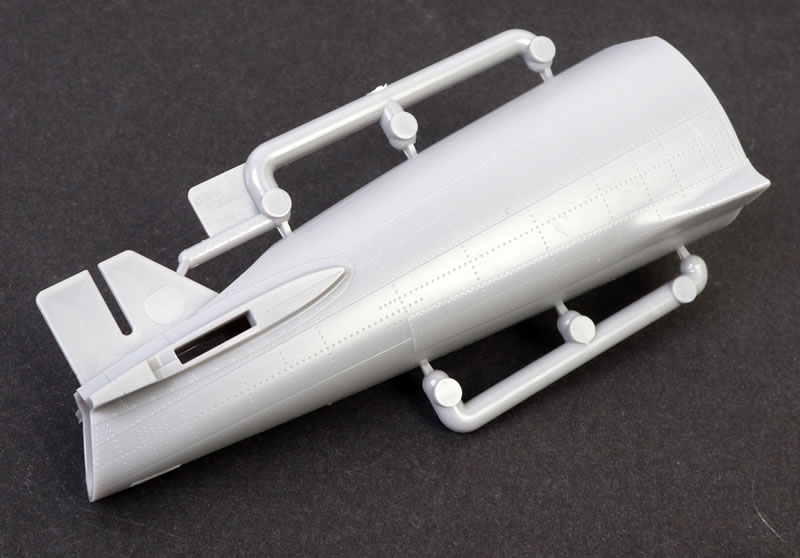
As far as I can recall, this is a unique concept in any aircraft scale model.
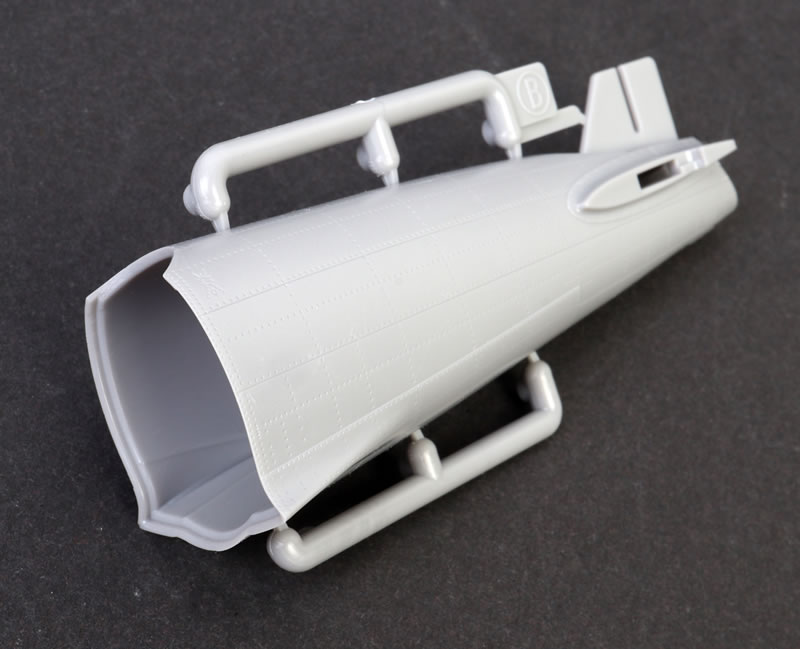
The forward fuselage is equally unconventional. Each side is moulded as a structural skeleton with ribs, stringers, control boxes, throttles, and levers rendered directly onto the framework.
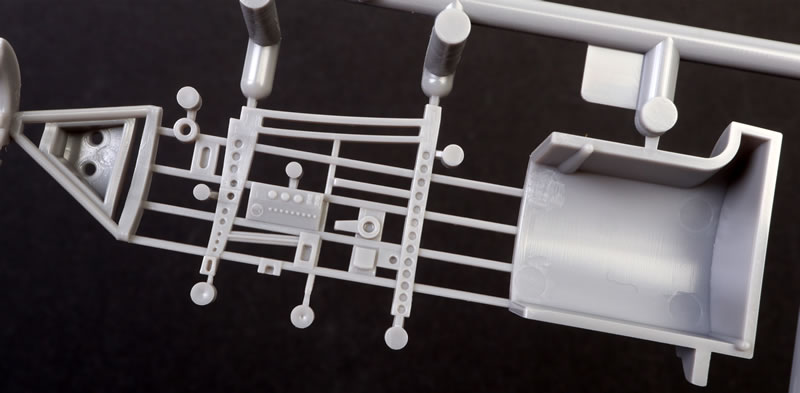
The cockpit is cleverly layered, featuring a detailed floor, rudder pedals, fuel tank, and fire extinguisher. The perforated pilot’s seat and rear bulkhead are particularly impressive, lending a rare level of authenticity in this scale.
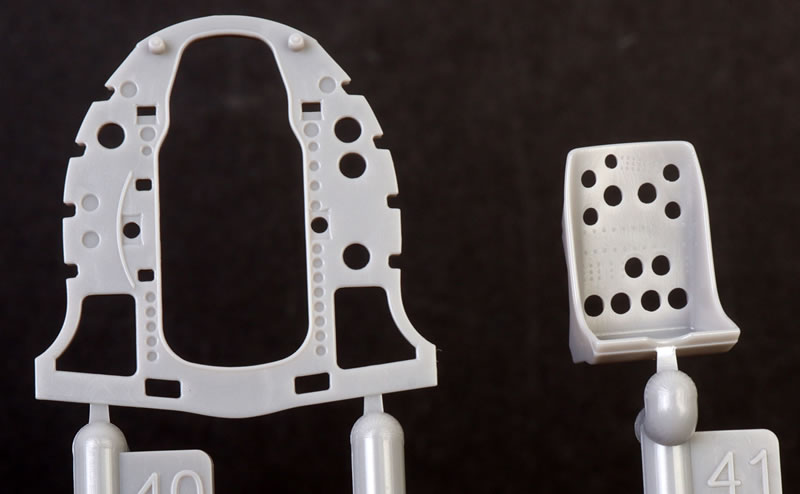
The instrument panel features crisp raised detail with optional decal overlays for the dials. Once painted and dry-brushed, it should look good.

Once the cockpit is assembled, the two skeletal forward fuselage halves enclose the tub, with a plastic saddle fitted over the top of the structure.
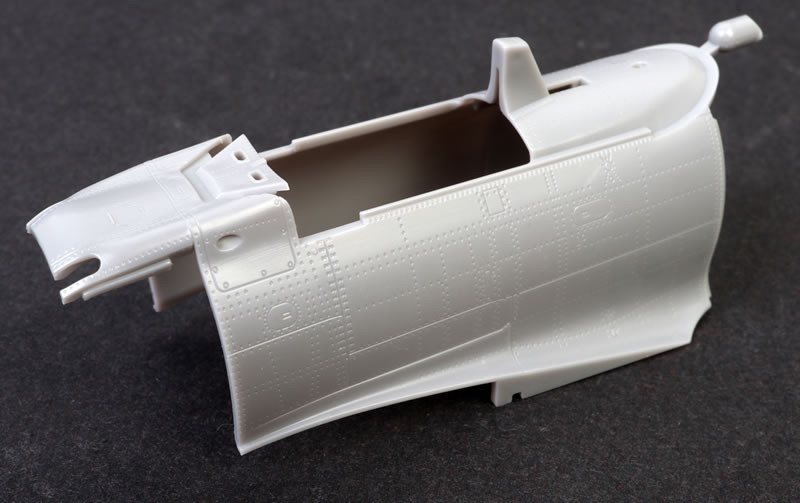
The wings are full-span upper and lower sections with a spar doubling as the rear landing gear wall.
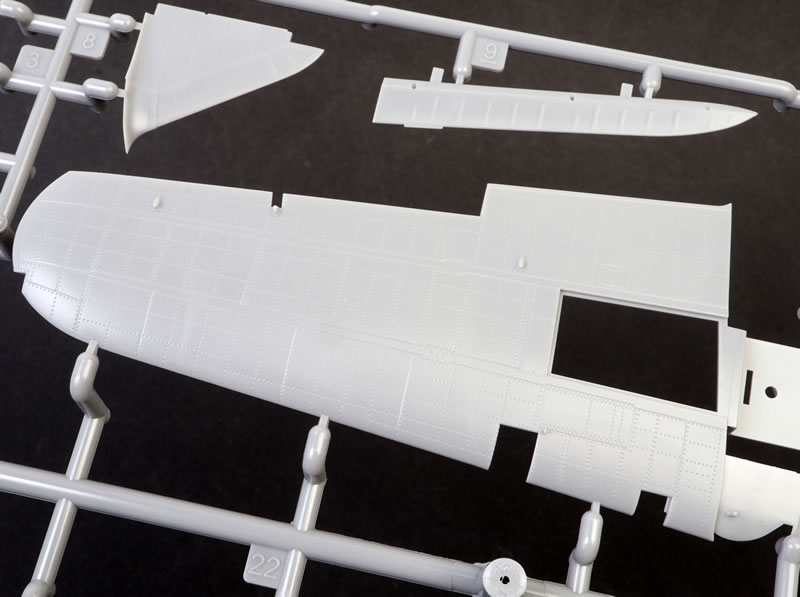
The wheel wells are packed with structural detail. Inserts are included for the upper and lower machine gun access hatches, while the flaps, ailerons, and rudder are all separate and may be posed to taste.
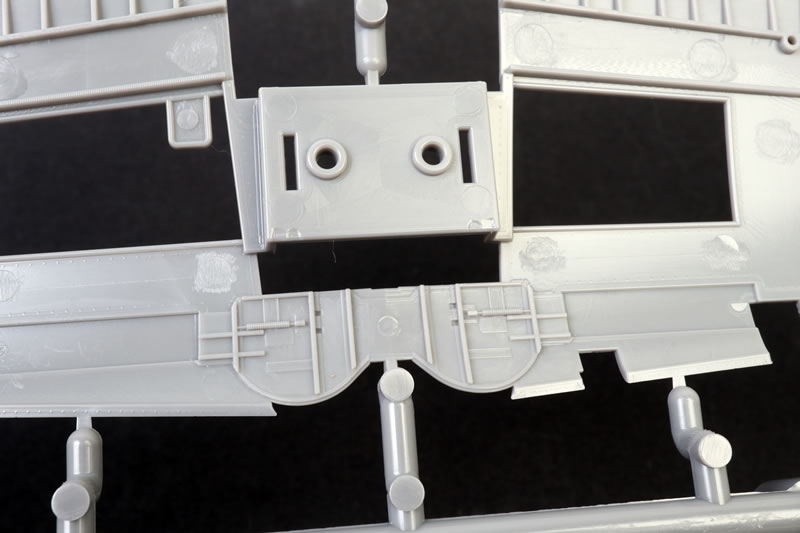
The engine is lavishly detailed, comprising 19 parts including cylinders, pushrods, crankcase, cowl flaps, and manifolds. The main undercarriage is simple but crisply moulded, and a drop tank is provided.
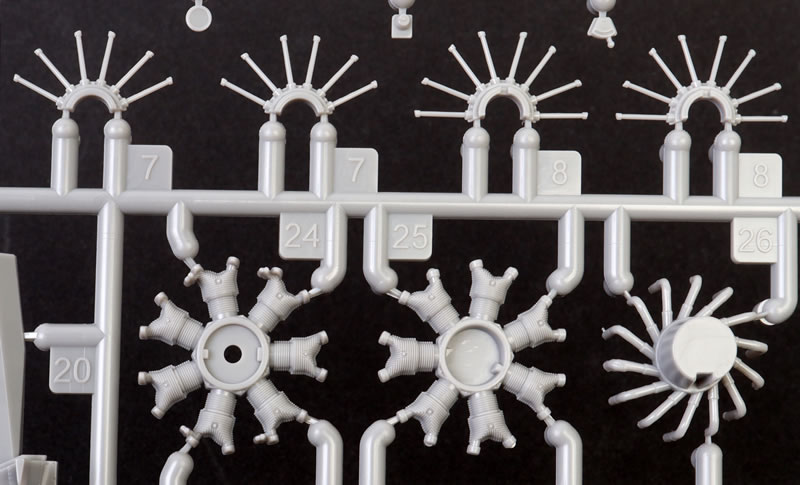
Surface textures combine finely recessed panel lines with subtle rows of rivets—delicate, consistent, and convincing.
Clear Parts
Clear parts are presented on a single sprue. They are thin, crystal-clear, and distortion-free, allowing the sliding canopy to be posed open or closed.
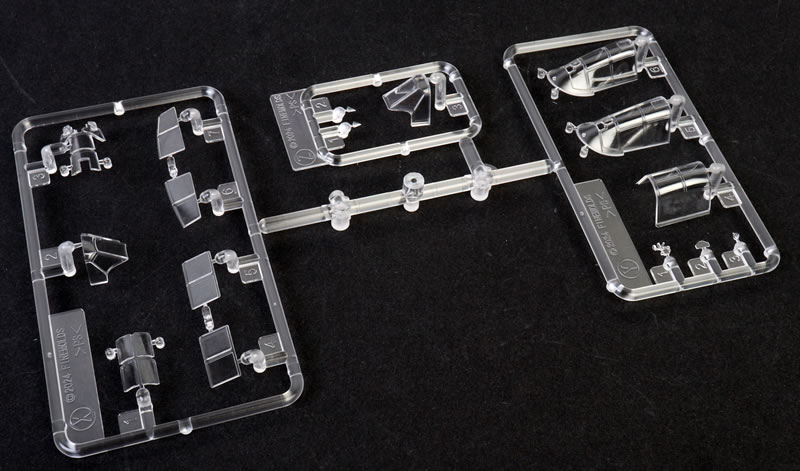
Fine Molds also includes an ingenious alternative: grey plastic canopy frames into which the clear sections are glued after being painted Dark Green.
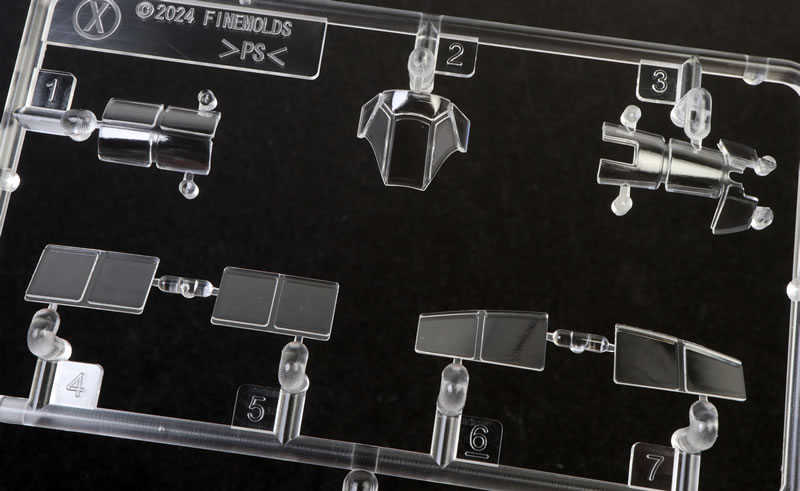
The frames are protected by being moulded inside rectangular "boxes".
This clever design removes the need for masking, although will be needed to avoid damaging the delicate frames or smear the clear parts with glue.
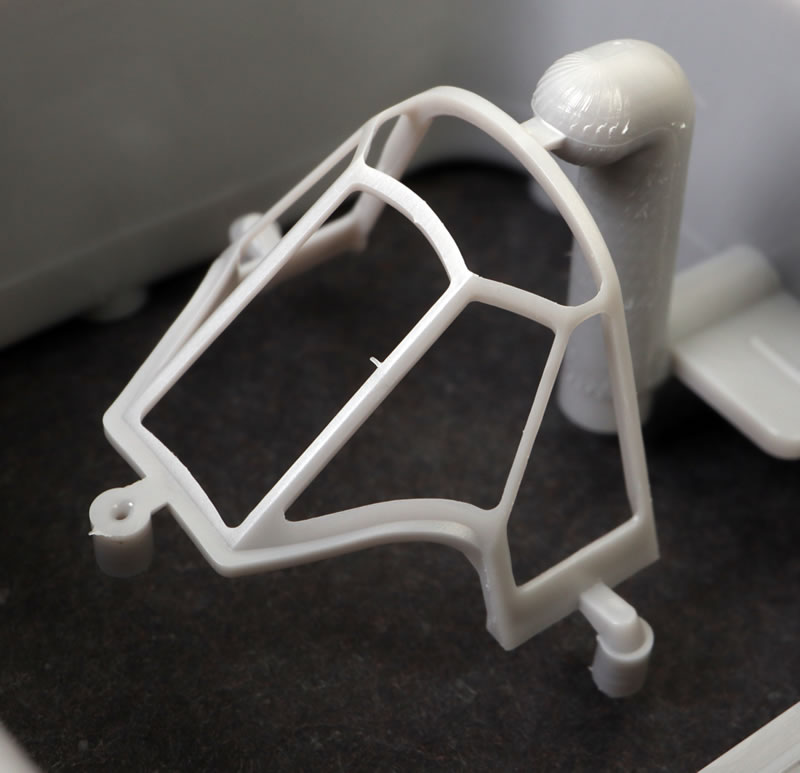
I’ll be using Gator’s Grip acrylic glue for this step.
Markings
The instructions provide clear painting guides using common hobby paint ranges.
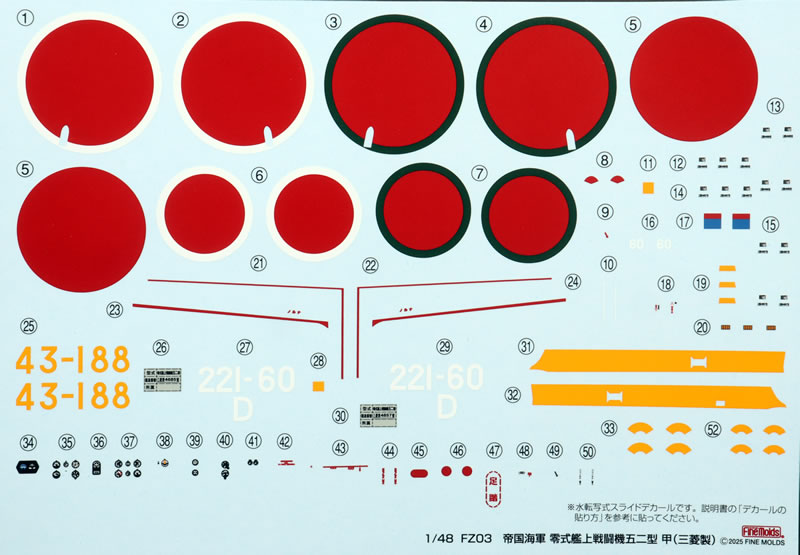
Markings are supplied for two options:
-
A6M5, 203rd Naval Flying Group, Rabaul, 1944
-
A6M5, 302nd Naval Flying Group, Japan, 1945
Both are finished in IJN Grey (Mitsubishi) lower surfaces and Dark Green (Mitsubishi) upper surfaces.
The decals are in perfect register with thin carrier film. Colours look good and well saturated. The Hinomaru red is deep without being garish, and stencil data is legible even under magnification.
Fine Molds’ 1/48 scale A6M5 Zero Model 52 Ko (Mitsubishi Production) demonstrates clever design. The unconventional fuselage structure, detailed interior, and refined surface textures show just how far modern injection moulding has come.
The kit combines innovative construction with Fine Molds' precision. It should build into an accurate replica straight from the box.
For fans of Japanese WWII aircraft—or anyone who appreciates clever, forward-thinking kit design—this is one to look out for.
Highly Recommended.
Purchased by the Reviewer
Text and Images Copyright © 2025 by Brett Green
Page Created 23 October, 2025
Last updated
24 October, 2025
Back to HyperScale Main Page |
